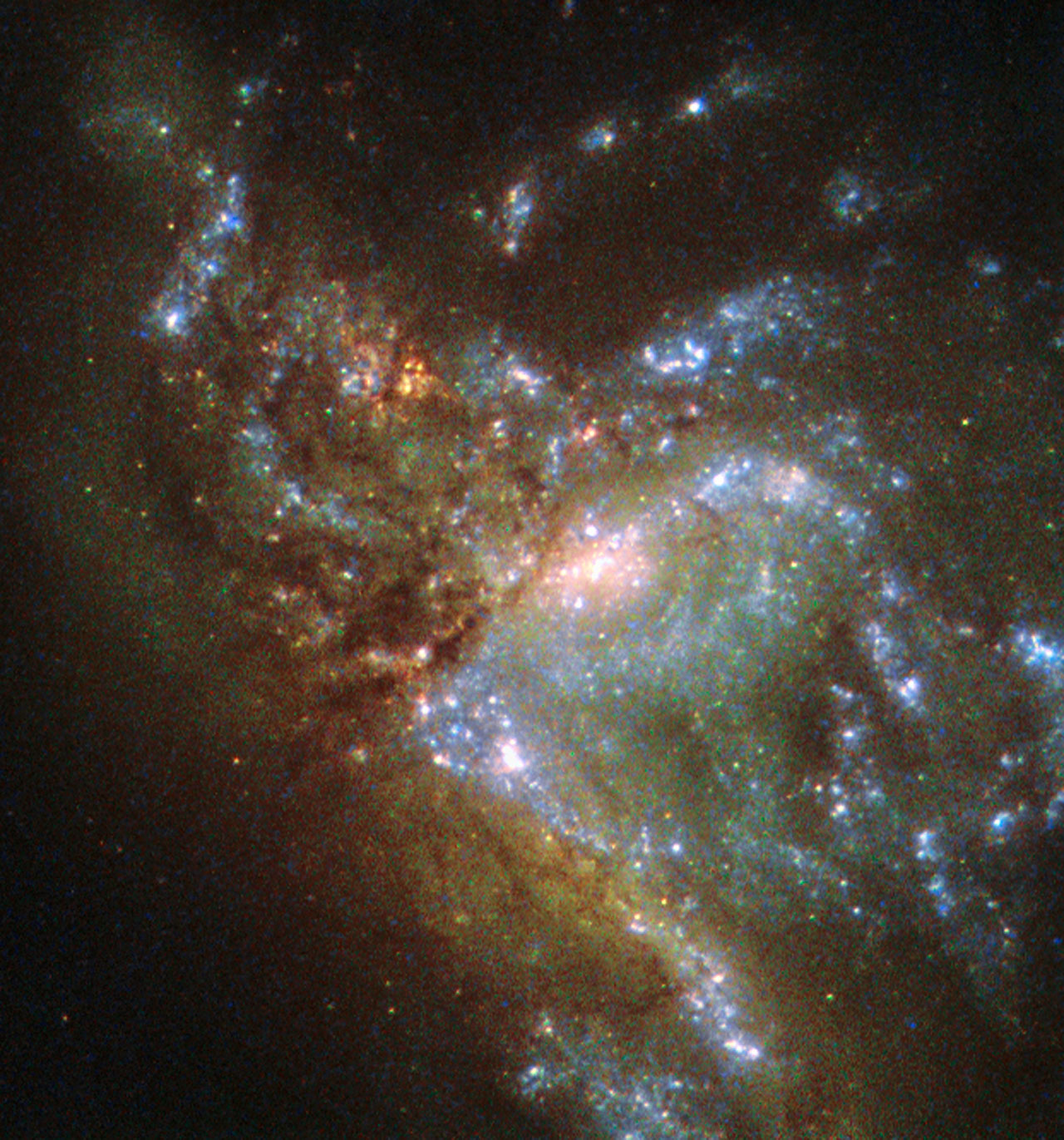Distant Galaxy Merger Captured by Hubble Space Telescope (Photo)

You can ring in the new year with some celestial fireworks, courtesy of the iconic Hubble Space Telescope.
Hubble has taken a colorful photo of the galaxy NGC 6052, which lies about 230 million light-years away in the constellation Hercules — and is actually not a single galaxy at all.
"It would be reasonable to think of this as a single abnormal galaxy, and it was originally classified as such," European Space Agency (ESA) officials wrote in a description of the image, which was released on Dec. 28. (Hubble is a joint mission involving NASA and ESA.)
"However, it is in fact a 'new' galaxy in the process of forming," ESA officials added. "Two separate galaxies have been gradually drawn together, attracted by gravity, and have collided. We now see them merging into a single structure."
While NGC 6052's shape is chaotic now — or was 230 million years ago anyway, when the photons detected by Hubble began their long cosmic journey — the galaxy will eventually settle down into a stable structure, ESA officials said.
Galaxy mergers are common throughout the universe. Indeed, our own Milky Way is on a collision course with the neighboring Andromeda galaxy; the two giant spirals will come together about 4 billion years from now, in a merger that will fundamentally reshape Earth's night sky. (Whether any lifeforms will still be around to gaze up at that altered sky is, of course, an open question.)
The Hubble Space Telescope, whose science operations are managed by the Space Telescope Science Institute in Baltimore, launched to low Earth orbit in April 1990 aboard the space shuttle Discovery.
Breaking space news, the latest updates on rocket launches, skywatching events and more!
Hubble's initial images were disappointingly blurry, and scientists soon realized that the telescope had left the ground with a slight flaw in its primary mirror. That problem was fixed by spacewalking astronauts, who installed corrective optics in December 1993.
Astronauts repaired and upgraded Hubble four more times, on servicing missions in 1997, 1999, 2002 and 2009. The iconic telescope is still going strong, and its operators have expressed confidence that it should continue capturing gorgeous images of the cosmos through 2020, and possibly even farther into the future, provided nothing unforeseen happens.
Follow Mike Wall on Twitter @michaeldwall and Google+. Follow us @Spacedotcom, Facebook or Google+. Originally published on Space.com.

Michael Wall is a Senior Space Writer with Space.com and joined the team in 2010. He primarily covers exoplanets, spaceflight and military space, but has been known to dabble in the space art beat. His book about the search for alien life, "Out There," was published on Nov. 13, 2018. Before becoming a science writer, Michael worked as a herpetologist and wildlife biologist. He has a Ph.D. in evolutionary biology from the University of Sydney, Australia, a bachelor's degree from the University of Arizona, and a graduate certificate in science writing from the University of California, Santa Cruz. To find out what his latest project is, you can follow Michael on Twitter.

